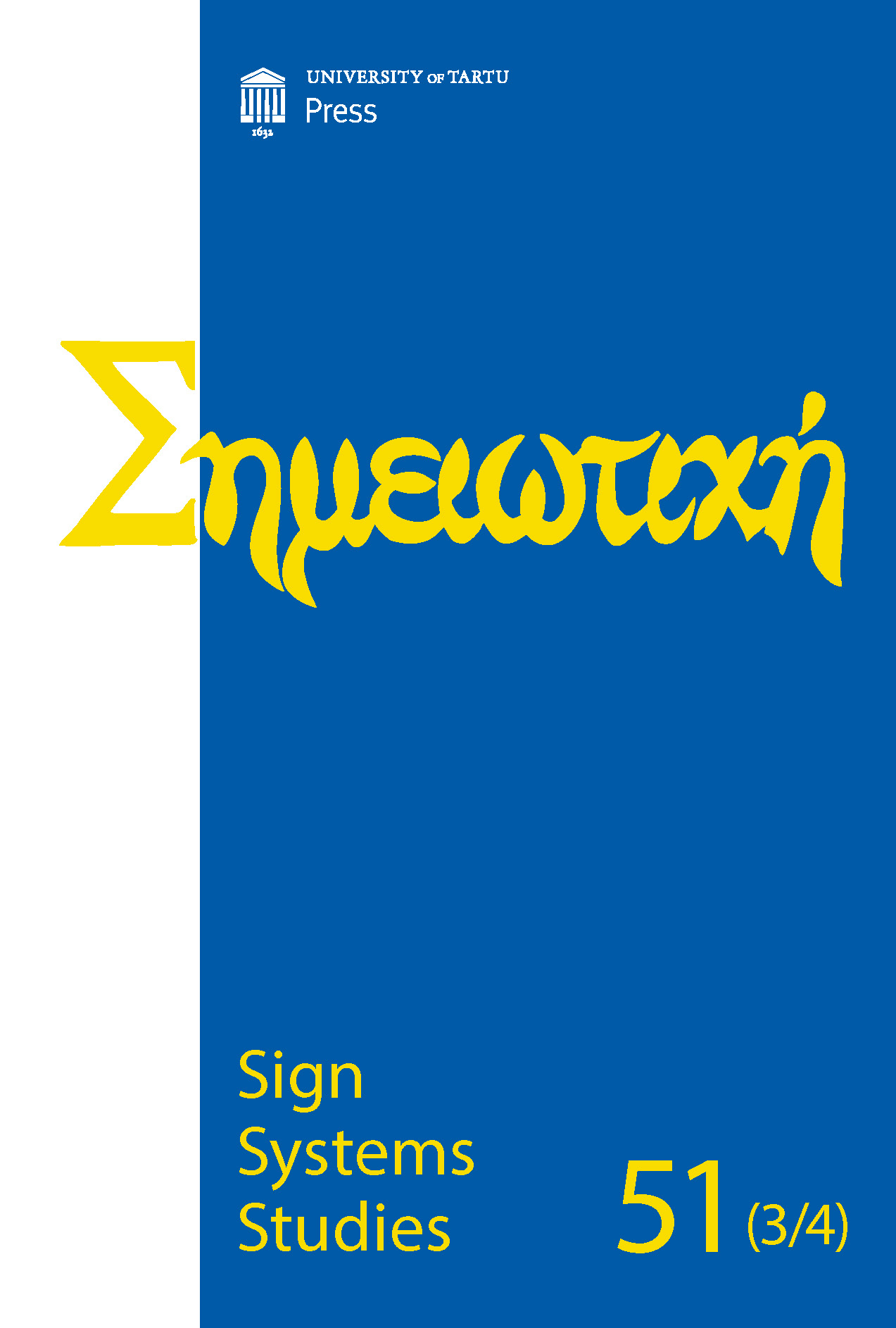Semiotic mode and sensory modality in multimodal semiotics: Recognizing difference and building complementarity between the terms
DOI:
https://doi.org/10.12697/SSS.2023.51.3-4.05Keywords:
multimodality, semiotic mode, sensory modality, filmAbstract
This article addresses an issue in multimodal cultural studies – the inconsistent use of the notions ‘mode’ and ‘modality’. As these notions are frequently employed interchangeably, making a clear distinction between them and positioning them in a coherent system will be helpful. To outline such a system, I envisage a two-layer framework where modes and modalities support each other. The central branch of multimodal semiotics (developing from Gunther Kress’ sociosemiotics towards John Bateman’s comprehensive approach) recognizes ‘mode’ as a pivotal research concept. While ‘mode’ as a semiotic resource is dependent on its materiality, culturally shaped practices and discourse semantics, the neurocognitive characteristics of sensory modalities are often seen as secondary to meaning-making. This article suggests that discussion of the semiotic potential of sensory modalities is complementary to the semiotic theory of multimodality. In order to illustrate this, I will construct an experimental typology of modality relations, which also takes modes into account. This typology distinguishes between supporting, modifying, conflicting, substituting and cross-activating relations.
Downloads
Downloads
Published
How to Cite
Issue
Section
License
Copyright (c) 2024 Martin Oja

This work is licensed under a Creative Commons Attribution-NonCommercial-NoDerivatives 4.0 International License.


